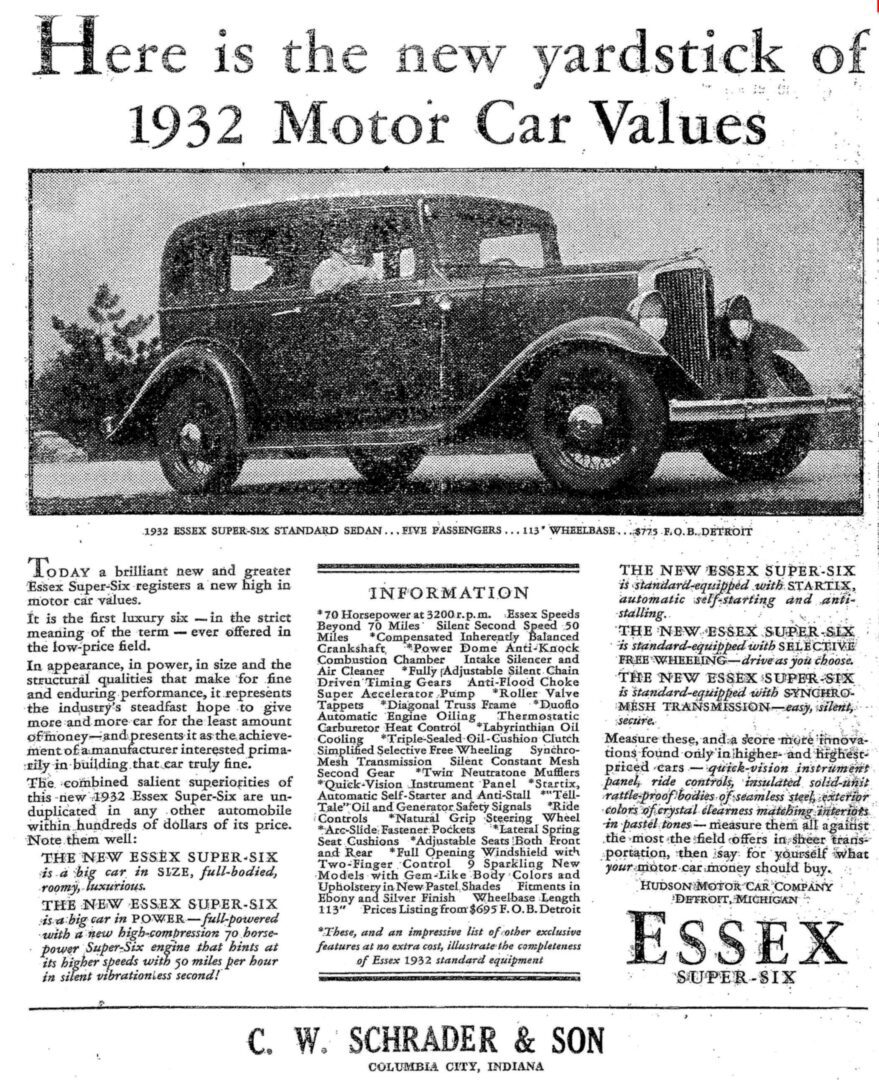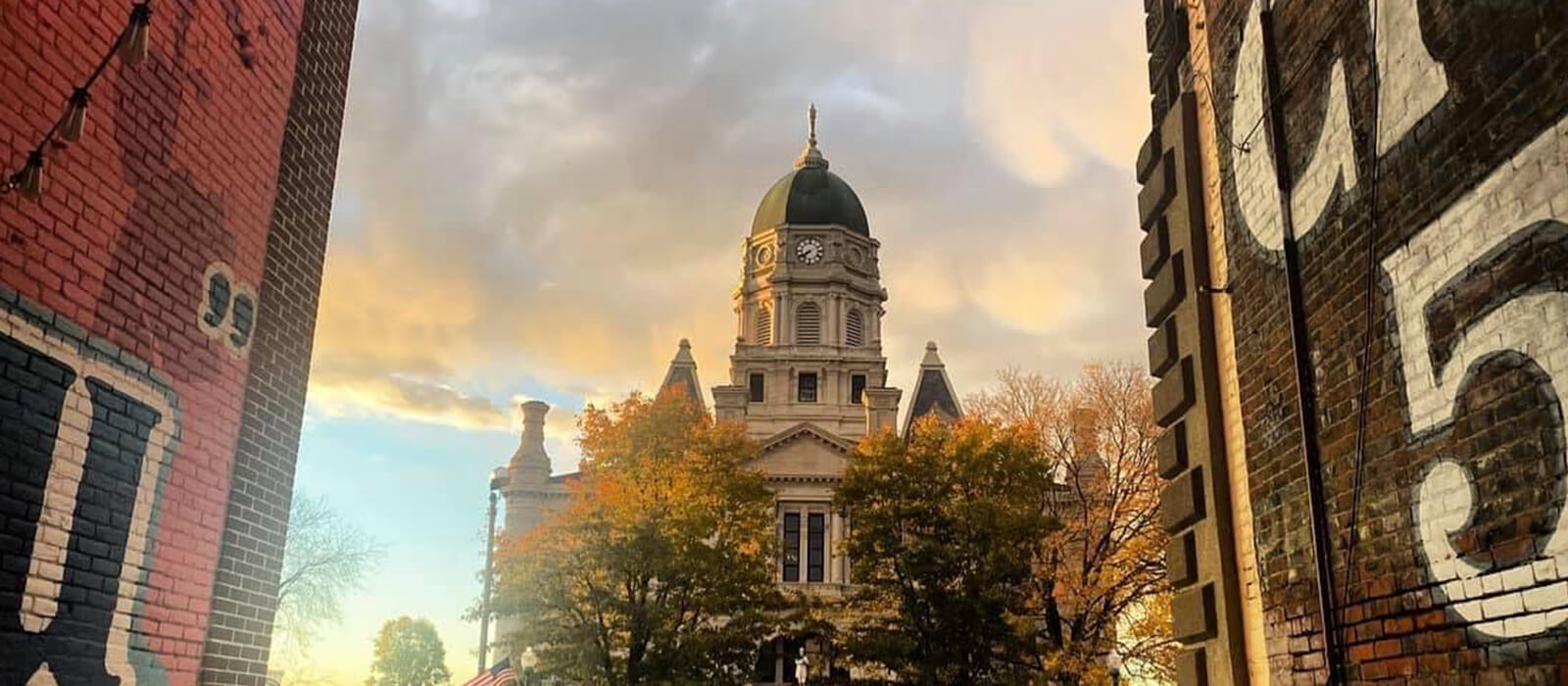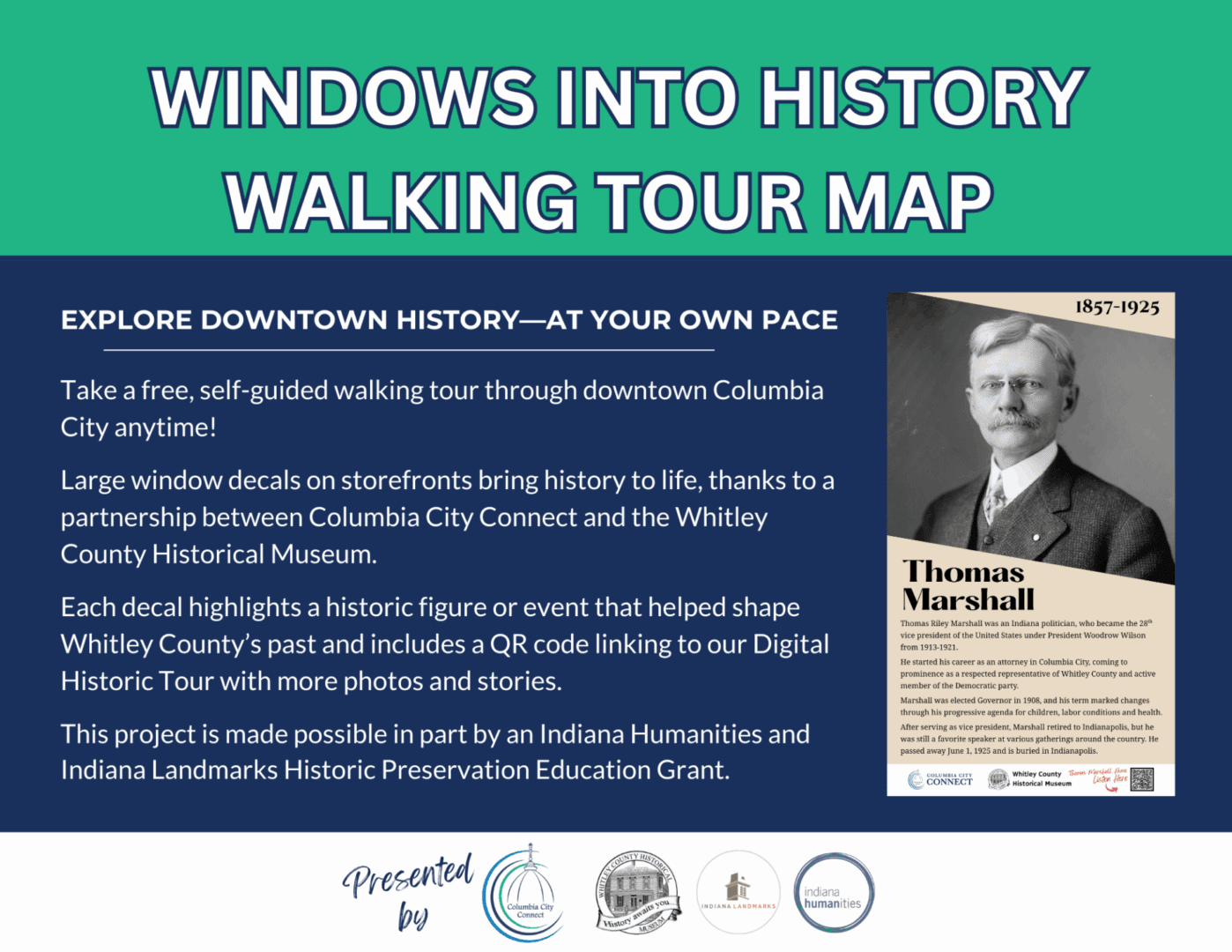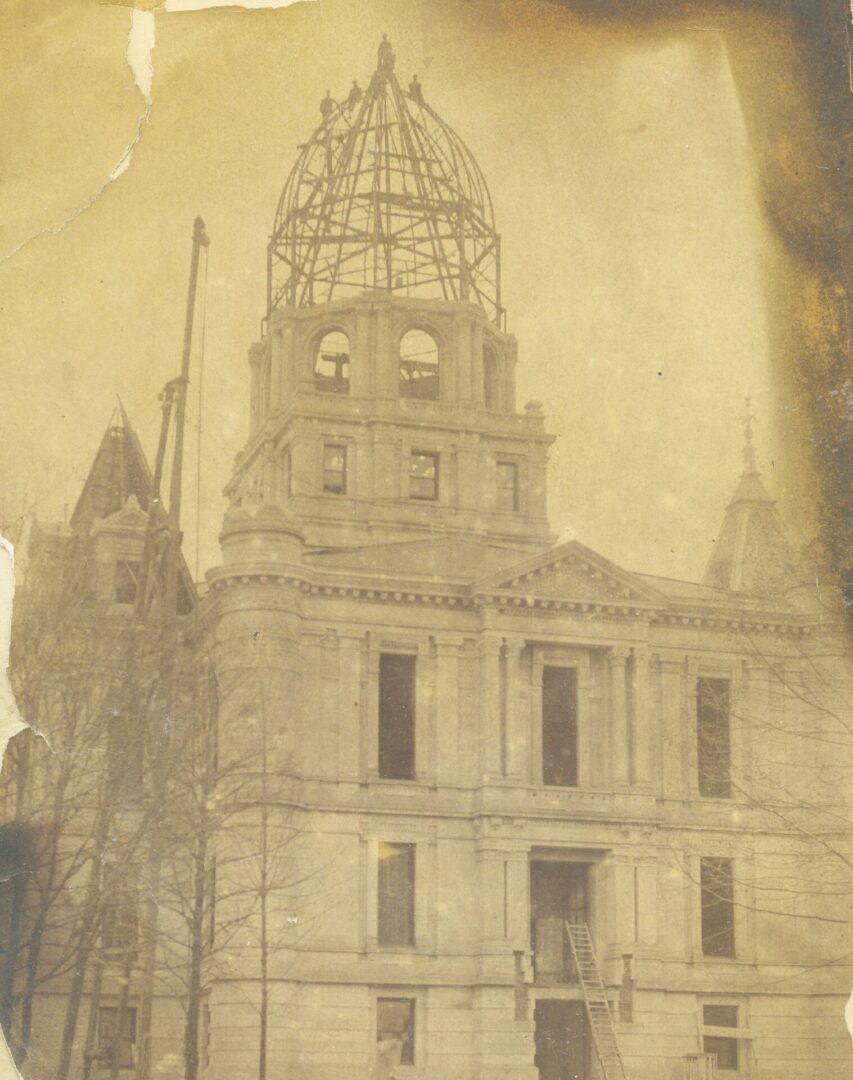Downtown Columbia City History Tour Stop 7
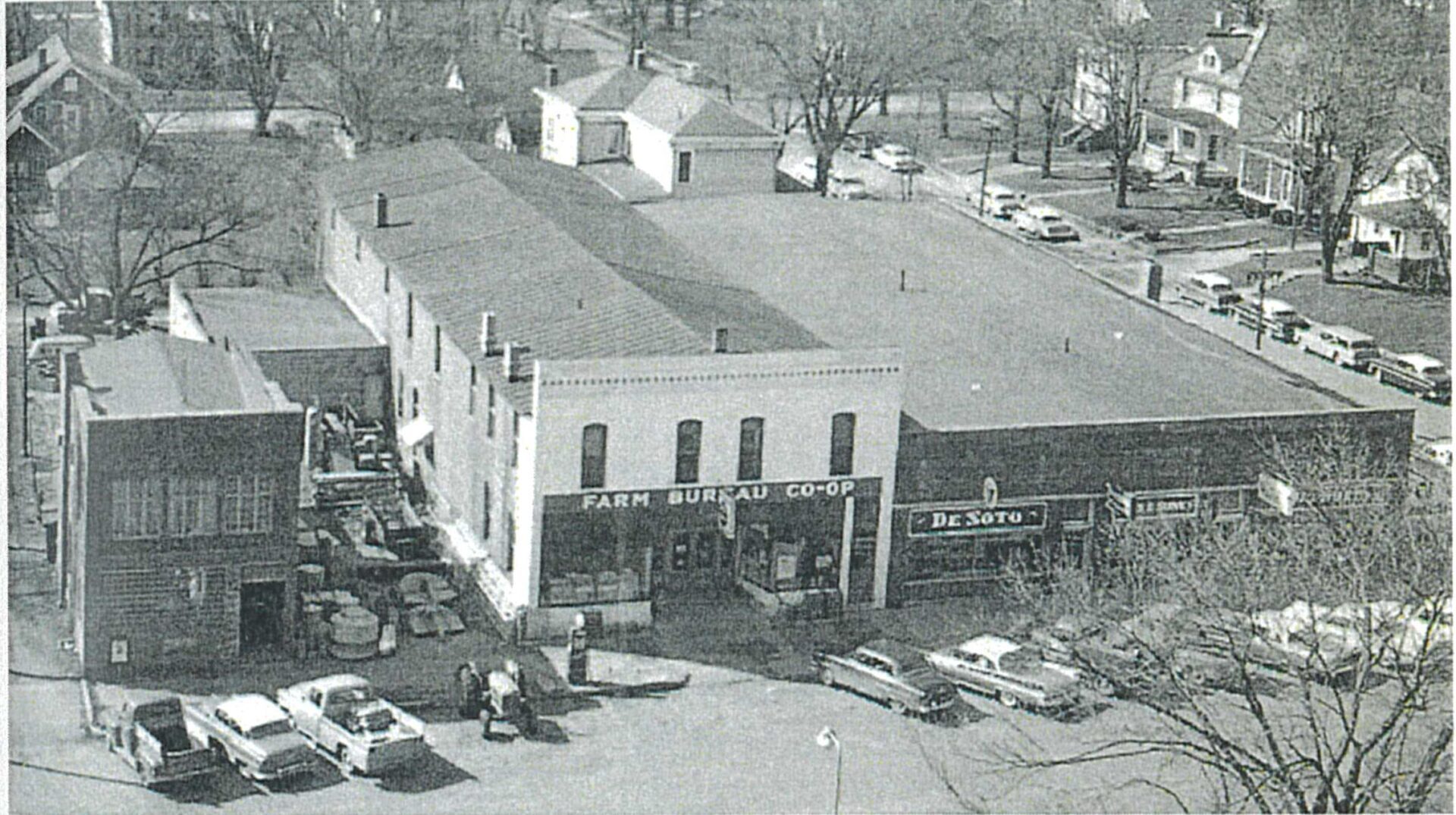
During the 1900s, Market Street had a distinct automotive theme. The corner of Main and Market—from the 1930s to 1981—was home to numerous businesses focused on automobile sales and repairs. This was a time when American families were expanding after World War II. Roads, highways, and interstates were being built across the nation, and the automobile transitioned from a luxury item to an essential part of daily life.
Dealership Row: 101 & 103 East Market Street
Market Street addresses 101 and 103 were occupied by four different car dealerships over five decades. These included Whitley County Motor Sales, Thomas Ford Sales, Columbia Motor Sales, and Stevens Motor. Each of these dealerships played a part in shaping the automotive presence in downtown Columbia City.
Schrader & Sons: A Trusted Name in Repairs
At the west end of the block, C. W. Schrader & Sons Sales & Body Shop served the community for more than 40 years. During the 1930s and 1940s, they featured Hudson-Essex and Desoto vehicles. Schrader’s reputation for dependable service made it a local fixture during a time when vehicle ownership was rapidly increasing.
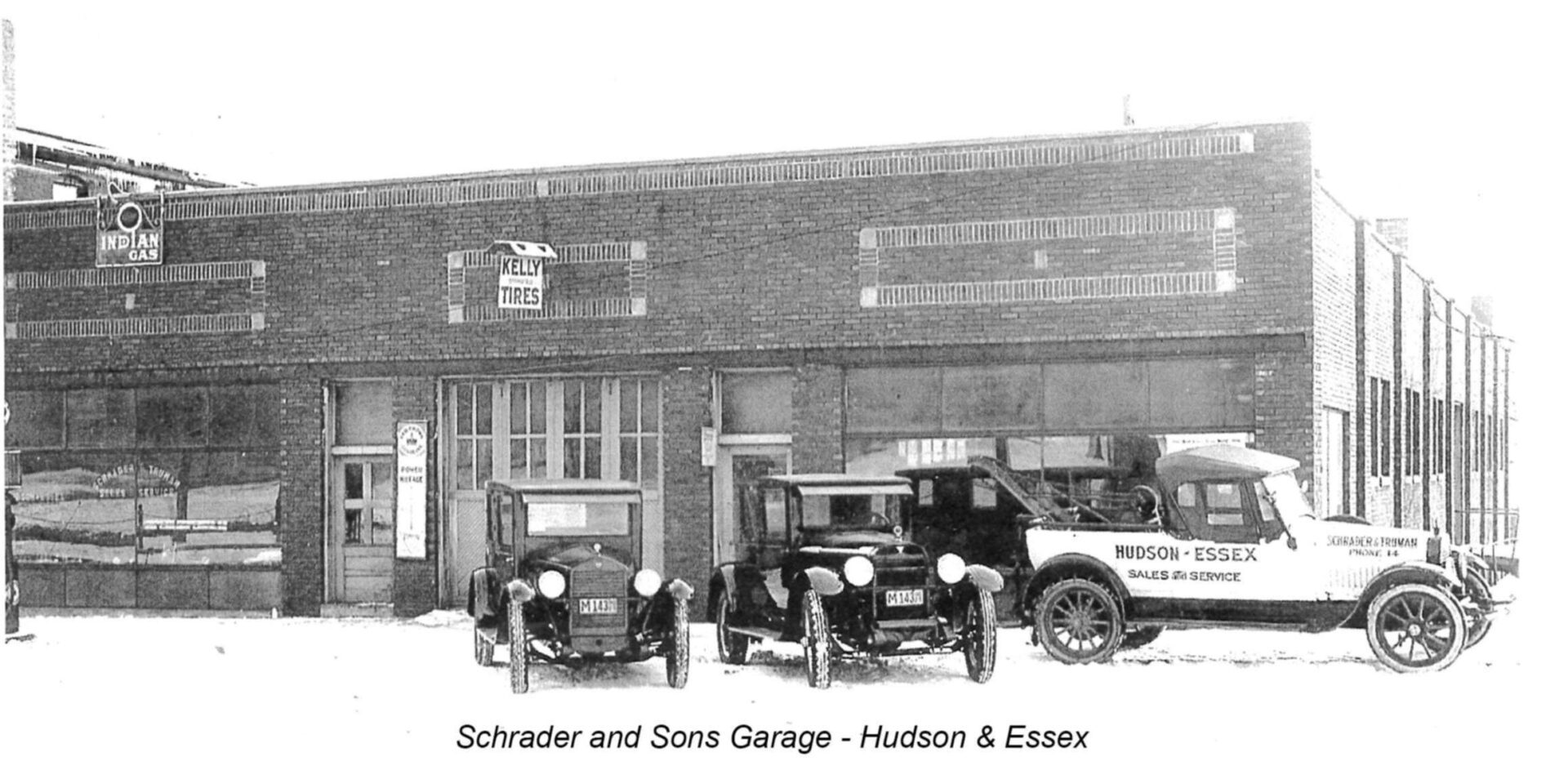
A National First: Georgia Reeg, Automotive Trailblazer
Also on East Market Street was the site of a groundbreaking moment in American automotive history. Gene Reeg Motor Sales began in 1949, but following Gene’s untimely death in 1969, his wife Georgia took over the business. In 1970, General Motors awarded Georgia the Pontiac and GMC franchises—making her the first woman in the United States to receive such a franchise from GM. Her leadership was pioneering, and the Reeg family continues to run the dealership today.
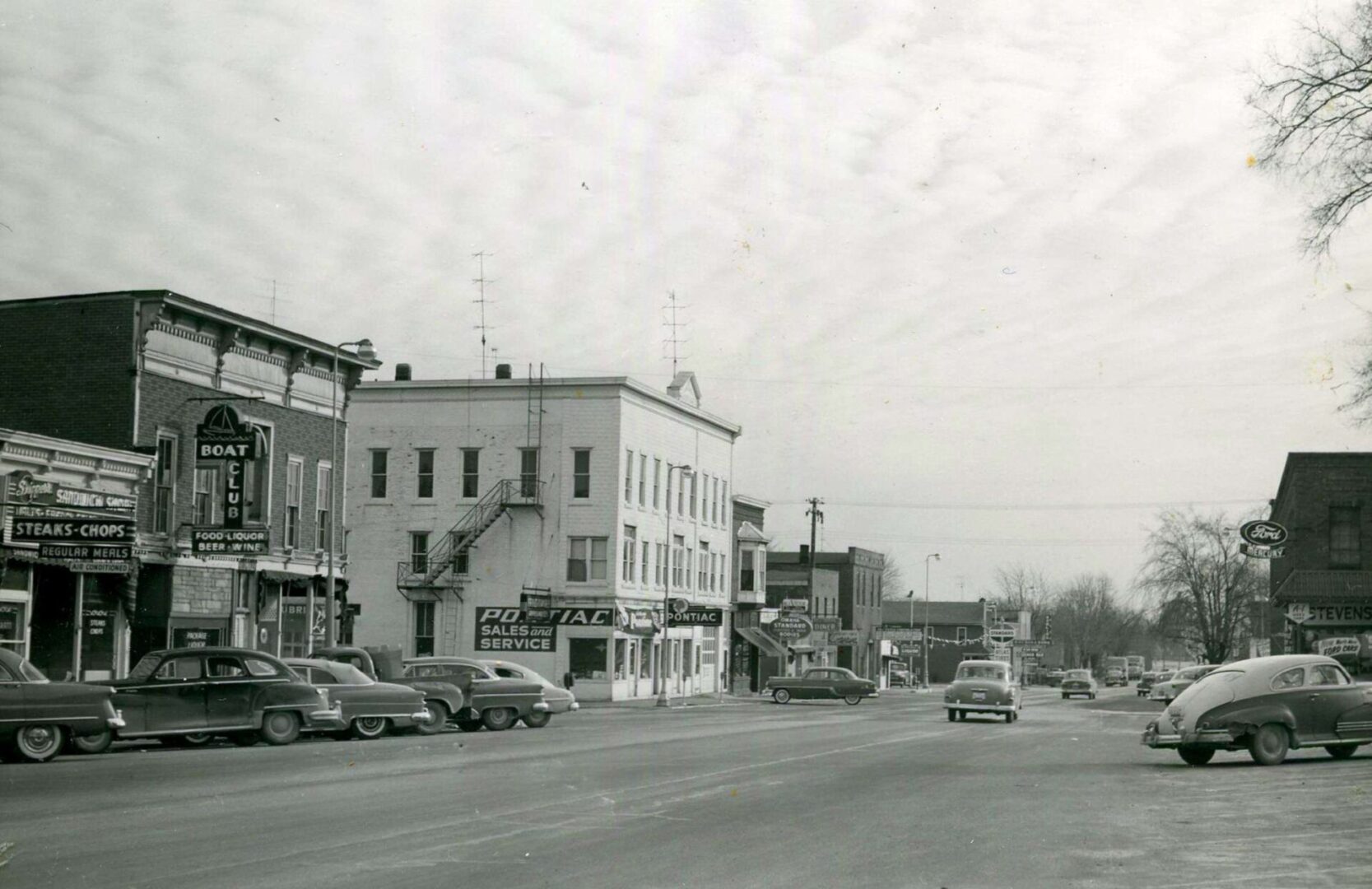
The Harper Buggy Factory: From Horse-Drawn to Historic
Before the automobile era, Market Street was home to the Harper Buggy Factory, which stretched all the way to Ellsworth Street and included five buildings. Known for producing top-tier buggies with streamlined technology, Harper products were admired throughout the Midwest. Sadly, in 1921, a devastating fire destroyed much of the complex, leading to the factory’s closure. A Harper Buggy remains on display today at the Whitley County 4-H Fairgrounds Museum—a tribute to this once-thriving business.

The Courthouse Custodian’s Home: 107 East Market Street
Not all of Market Street was about vehicles. At 107 East Market, a more unusual story unfolded. For nearly 60 years of the 1900s, this address served as the Courthouse Custodial Residence. The courthouse custodian lived onsite and was responsible for cleaning the courthouse and, during winter months, maintaining its heat.
Behind the house was a building that housed the boiler, which delivered steam heat through underground pipes to the courthouse and even the sidewalks surrounding it. Yes—heated sidewalks in Columbia City! This system not only kept the courthouse warm but also helped prevent snow and ice buildup.
Evolution and Legacy
Today, Market Street is largely occupied by the Whitley County Jail. However, the western end of the street remains home to successful service-based businesses. Like other streets surrounding the courthouse square, Market Street has evolved through the years—always contributing to the character and economy of downtown Columbia City.
Thank you to Pam Koch and Doug Clark for their outstanding research and writing of the article and the Whitley County Historical Museum for generously sharing photographs from their collection. Thank you to Columbia City High School’s WJHS 91.5 The Eagle for producing the audio recording.
